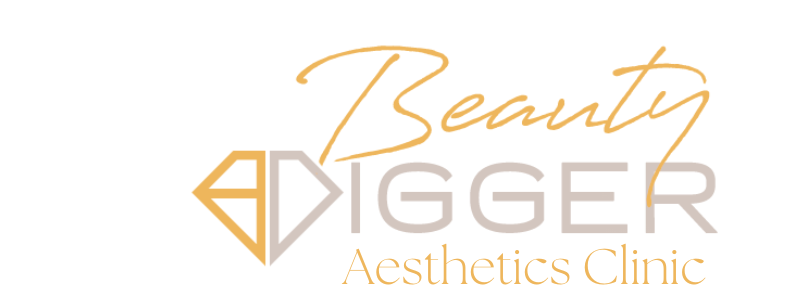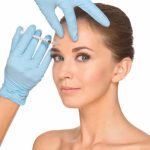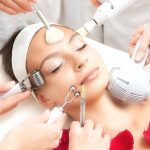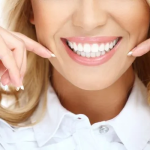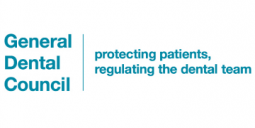Features List
Nasolabial Filler

What is Nasolabial Filler?
Nasolabial fillers are a type of dermal filler used to address the appearance of nasolabial folds, commonly known as smile lines or laugh lines. These folds are the lines that run from the sides of the nose to the corners of the mouth and are a natural part of the aging process. They become more pronounced over time due to factors such as the loss of skin elasticity, collagen, and subcutaneous fat.
Nasolabial fillers typically contain hyaluronic acid, a substance naturally found in the body that adds volume and hydration to the skin. When injected into the nasolabial folds, these fillers help fill in and smooth out the wrinkles, restoring lost volume and providing a more youthful appearance.
How does Nasolabial Filler work?
Nasolabial fillers work by injecting a gel-like substance, often containing hyaluronic acid, into the nasolabial folds – the lines that run from the sides of the nose to the corners of the mouth. The procedure is designed to address the effects of aging, which lead to the loss of skin elasticity, collagen, and subcutaneous fat, resulting in the deepening of these folds.
The hyaluronic acid in the filler serves as a volumizing and hydrating agent. Hyaluronic acid is a naturally occurring substance in the body that attracts and retains water, contributing to skin hydration and plumpness. When injected into the nasolabial folds, the filler adds volume to the treated area, effectively filling in the wrinkles and creases. This process smoothens the skin’s surface and restores a more youthful and refreshed appearance. Additionally, nasolabial fillers may stimulate collagen production over time, further contributing to improved skin texture and elasticity in the treated area.


How is the treatment administered?
The administration of nasolabial filler treatment involves the use of either a fine needle or a blunt-tipped cannula, depending on the practitioner’s technique and patient-specific factors. With the fine needle technique, a thin needle is employed for precise injection, allowing for detailed control over filler placement in targeted areas of the nasolabial folds. On the other hand, the cannula technique utilizes a flexible tube with a rounded tip, offering even filler distribution over a larger area and reducing the risk of bruising. The choice between a needle and a cannula is influenced by considerations such as patient anatomy, practitioner preference, and treatment goals. Overall, the procedure is relatively quick, often completed in 15 to 30 minutes, and patients can typically resume their regular activities shortly after the treatment.
Side effects
While nasolabial filler treatments are generally safe, it’s important to be aware of potential side effects. The use of a cannula in this procedure is often considered a safer approach, particularly in areas with critical structures like the nasolabial folds, where the facial artery is present. Employing a cannula can reduce the risk of complications, such as vascular compromise or inadvertent injection into blood vessels, which could potentially occur with the use of needles.
Common side effects for both needle and cannula techniques may include temporary swelling, bruising, redness, or tenderness at the injection sites. These effects are typically mild and subside within a few days.
Choosing a qualified medical practitioner, such as Dr Alexa who is well-versed in facial anatomy and injection techniques, particularly when using a cannula, is crucial to minimizing risks and ensuring a safe and effective procedure.

Before & After Gallery


Frequently
Asked Questions
Nasolabial folds are lines that run from the sides of the nose to the corners of the mouth. They develop due to aging, loss of skin elasticity, collagen, and subcutaneous fat.
As the skin ages, it undergoes changes such as a reduction in elasticity and a decline in collagen production. Collagen, a structural protein, contributes to the skin's firmness and resilience. Additionally, a decrease in subcutaneous fat, which provides volume to the face, can contribute to the deepening of these folds. The combined effects of these aging-related changes result in the formation and increased visibility of nasolabial folds, contributing to an aged or tired appearance.
A fine needle provides precision, while a cannula, with a rounded tip, offers even filler distribution and reduced risk of bruising, making it a safer option in areas near critical structures like the facial artery.
Discomfort is minimal, and practitioners often use a numbing cream or local anesthesia to enhance patient comfort.
Results from nasolabial filler treatments are typically visible immediately after the procedure. Patients often notice a reduction in the depth of nasolabial folds, leading to a smoother and more refreshed appearance shortly after the injections.
Longevity of results can vary among individuals. In general, the effects of nasolabial fillers can last several months. The duration depends on factors such as the specific type of filler used, individual metabolism, and the overall lifestyle of the patient.
The number of sessions depends on individual goals and the degree of correction desired.
As with many medical cosmetic treatments, it is not advisable to receive Dermal filler treatments while pregnant or breastfeeding. Dermal fillers have not been tested or verified for safety and efficacy on pregnant patients, so there is no concrete evidence to support the safety of fillers in this group of patients.
In the UK there is illegal to inject anyone with botulinum toxin or dermal fillers for cosmetic purposes. It does not matter if you or your parents or guardians give their permission for the procedures to take place. It is important to note that most people do not stop growing until they reach their early 20s; therefore, it is advised to wait until that age to have cosmetic work done.
To avoid infection, we would advise to refrain from applying make-up directly after receiving treatment. You can apply make-up the next day after Nasolabial fillers.
Alcohol does not in any way interfere with the results of the procedure. However, doctors have recommended not drinking for 24 hours because alcohol enlarge blood vessels, which may increase susceptibility to bruising. If bruising is a major concern, follow this advice.
